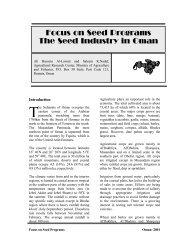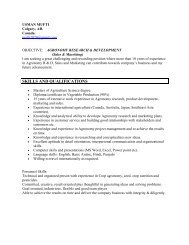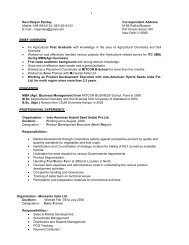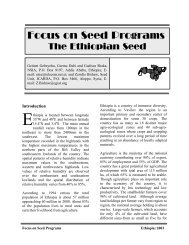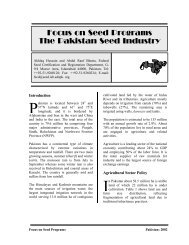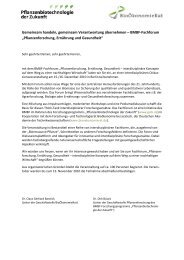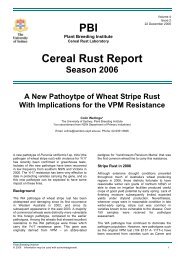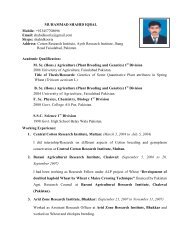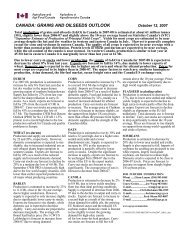Download newsletter - SeedQuest
Download newsletter - SeedQuest
Download newsletter - SeedQuest
You also want an ePaper? Increase the reach of your titles
YUMPU automatically turns print PDFs into web optimized ePapers that Google loves.
Seasons & Taste | October 2010 | 5<br />
Roma Cluster –<br />
The Next Generation Tomato<br />
Is Already Here<br />
Igal Flash, Tomato Product Director, igal.flash@zeraim.com<br />
Eli Yehoshua, Special Products Agronomist, eli.yehoshua@zeraim.com<br />
Amit Shiftan, Tomato Breeder, amit.shiftan@zeraim.com<br />
WHAT ARE THE PARAMETERS OF A TOP-<br />
QUALITY CLUSTER TOMATO?<br />
A superior cluster tomato must have a uniform<br />
appearance, both in terms of the size and shape<br />
of the fruit and of ripeness. Given that most of<br />
the crop is now intended for export, the shelf<br />
life of the fruits is of critical importance. The<br />
arrangement of the fruit on the clusters must be<br />
uniform and the vine itself needs to be strong<br />
and green and have a long shelf life. This is<br />
so that even after the produce is shipped the<br />
cluster will retain an appetizing appearance.<br />
In the Mediterranean<br />
region, the leading variety<br />
of cluster tomatoes in<br />
recent years is Syngenta’s<br />
Ikram. It can be found<br />
primarily in Italy, Turkey,<br />
and Israel. Most growers<br />
like this variety for its<br />
firmness and long shelf<br />
life, which makes it<br />
suitable both for export<br />
and for local markets.<br />
In addition, they have to display the basic<br />
parameters of excellent tomato varieties, such<br />
as vigorous growth, suitability to environmental<br />
conditions, high yield, and resistance to disease.<br />
Zeraim Gedera offers two leading varieties of<br />
cluster tomatoes, the Sophie and the Ikram.<br />
Both have a strong, neat vines and uniform<br />
fruit, and are firm with a long shelf life. In<br />
addition, these varieties are suitable both<br />
for local marketing and for export, thanks<br />
to their large fruits and the long shelf life<br />
of the vines.<br />
LOOKING TO THE FUTURE<br />
In view of the great demand in European<br />
countries for organic cluster tomatoes, Zeraim<br />
Gedera is currently developing cluster varieties<br />
with expanded resistance, including against<br />
the TYLCV and other leaf diseases. The new<br />
varieties will also feature higher yields and<br />
longer duration, while maintaining the quality<br />
of the fruit and the vine.<br />
At Zeraim Gedera we don’t rest on our laurels.<br />
Just when the Kilates is beginning to make its<br />
mark as one of the more successful tomatoes<br />
in the produce section, our breeders are already<br />
hard at work developing the next generation of<br />
elongated tomato - the Roma Cluster.<br />
Following the consumer success of the Kilates<br />
variety, and in light of the tremendous demand<br />
for it from both the supermarket chains and the<br />
growers, at Zeraim Gedera we realized that this<br />
is an excellent time to think about the next step<br />
forward. We have begun working on an elongated<br />
tomato variety suitable for harvest in clusters.<br />
One thing that inspired us to breed an elongated<br />
tomato that can be picked in clusters is the<br />
need to expand our basket of products and<br />
increase the variety of choices available to<br />
consumers. Here as well, the principle that<br />
guided us was that everyone throughout the<br />
fresh produce chain, growers and marketers<br />
alike, is our customer. So we have to supply a<br />
variety that will yield maximum profit to growers<br />
(including in the summertime), high-quality<br />
fruit with a long shelf life<br />
and low wastage for the<br />
supermarket chains, and<br />
of course one that is an<br />
excellent summer tomato<br />
suitable for a variety of<br />
uses in the kitchen and<br />
in salads.<br />
This is why we are<br />
developing the Roma<br />
Cluster with careful<br />
attention to the following<br />
parameters:<br />
Separating the fruit<br />
from the branch /<br />
For tomatoes that are picked in clusters,<br />
the attachment between the fruit and the<br />
cluster fishbone is very important. In the<br />
Roma Clusters:<br />
There is a strong attachment between the<br />
fruit and the kalics<br />
There is a strong attachment between the<br />
kalics and the cluster fishbone which allows<br />
the cluster to maintain its shape over time.<br />
The cluster retains its freshness / The plant<br />
has a strong green fishbone that remains<br />
green and fresh for a long time after the<br />
harvest, thereby saving the supermarket<br />
chains on wastage.<br />
The structure of the cluster / Each cluster<br />
has a neat arrangement of 6–8 fruits. The<br />
clusters do not usually need to be reshaped.<br />
The shape of the fruit. The shape of the Roma<br />
Clusters tomato is very important, for two<br />
main reasons:<br />
The cluster has a uniquely attractive appearance.<br />
Because of the shape and genetic elongated<br />
tomatoes contain less liquid and are particularly<br />
suited for use in sandwiches as well as in cooking.<br />
The Roma Clusters variety is currently being<br />
tested by several growers both for export and<br />
for the local market, with the idea that already<br />
in the coming season it will be grown in large<br />
quantities. From our discussions with Israeli<br />
supermarket chains we know that there is local<br />
demand for elongated tomatoes in clusters. In<br />
addition, this is a popular market segment in<br />
the export sector as well.<br />
Additional Facts about<br />
the Roma Clusters Tomato:<br />
• The clusters have fruits of a uniform size<br />
• The variety has a strong fishbone that<br />
remains green and fresh over time<br />
• There is a gradual and attractive change<br />
in color along the length of the cluster<br />
• The fruit does not have green shoulders<br />
• The fruits of this variety are slightly<br />
smaller than those of the single Kilates<br />
• The average weight of a cluster ranges<br />
from 500 to 700 grams<br />
• The variety sets well in both hot and<br />
cold weather<br />
It is important to note that just as the Zeraim<br />
Gedera team provides agro-technical support<br />
to Kilates growers, we will also support growers<br />
of the Roma Clusters segment with regular<br />
agro-technical support and detailed growing<br />
guidelines. We ascribe great importance to<br />
providing growers with support so they can<br />
achieve optimal results and realize the great<br />
genetic potential of this tomato variety.



